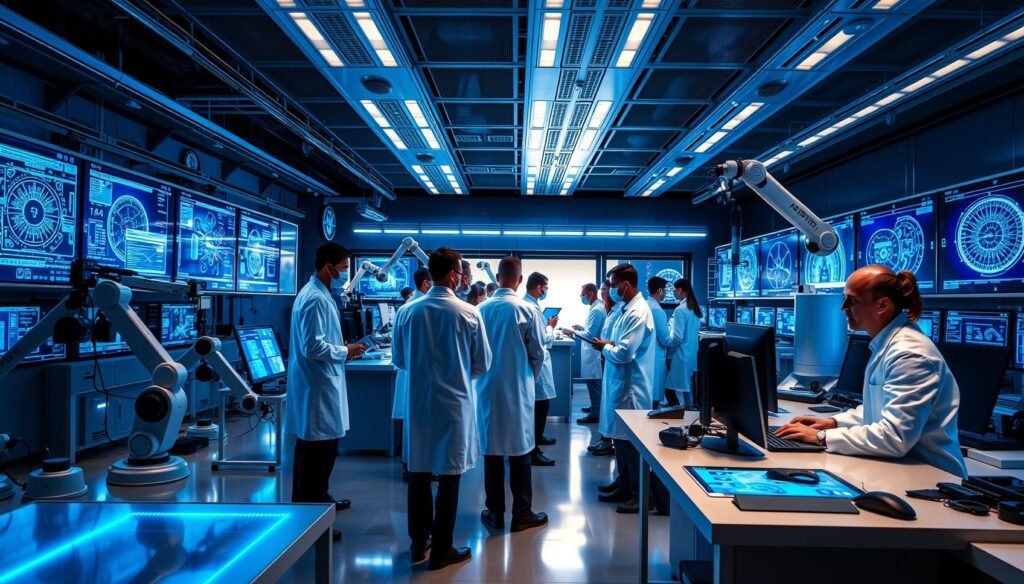Artificial intelligence (AI) has revolutionized numerous industries, enabling machines to perform tasks that were previously exclusive to humans.
Automation is becoming increasingly prevalent in various sectors, from manufacturing and logistics to healthcare and finance.
Ai automations are being used to analyze data, suggest solutions, and even drive automation itself
Chapter 1: Building the Foundation of AI
Chapter 2: Applying AI in Industry
AI has revolutionized various industries by automating repetitive tasks, enhancing efficiency, and improving decision-making processes. In manufacturing, AI-powered robots and machines learn from data and adjust their production lines accordingly, minimising defects and increasing productivity.
AI automation in logistics optimizes routes, predicts demand, and streamlines inventory management, reducing costs and improving delivery times. For instance, self-driving trucks can transport goods up to 500 miles without human intervention, significantly increasing safety and lowering operating expenses.
AI-powered healthcare solutions utilize machine learning algorithms to analyze medical data, diagnose diseases more accurately, and develop personalized treatment plans. Additionally, AI-driven telemedicine platforms facilitate remote consultations between doctors and patients, removing geographical barriers and allowing for timely access to medical care.
Chapter 2: Applying AI in Industry
**Chapter 2: Applying AI in Industry**
AI automations have become increasingly prevalent in various industries, transforming the way businesses operate and improve efficiency. In manufacturing, AI-powered robots are able to perform tasks such as welding and assembly with precision, reducing labor costs and improving product quality.
In logistics, AI-driven automated systems enable just-in-time delivery of goods, ensuring inventory levels are optimal and storage space is minimized. The use of AI algorithms also improves route planning and scheduling, resulting in reduced fuel consumption and lower emissions.
Furthermore, AI-powered healthcare solutions have improved disease diagnosis, patient monitoring, and treatment outcomes. Predictive analytics enabled by AI can identify high-risk patients early on, while machine learning algorithms can analyze large amounts of medical data to develop personalized treatment plans.
The development of these automation systems relies on advanced technologies such as computer vision, natural language processing, and deep learning algorithms. By leveraging these capabilities, businesses are able to unlock new productivity levels, enhance customer experience, and make informed decisions.
Chapter 3: Future Directions for AI Development
**Chapter 3: Future Directions for AI Development**
The ethical considerations of AI development are increasingly becoming a significant concern, as AI systems become more autonomous and powerful. For instance, how do we balance the benefits of AI in healthcare with the potential risks to patients’ personal data? The development of Explainable AI (XAI) is a crucial step in addressing these concerns and ensuring that AI decisions are transparent and accountable.
In addition to ethics, **ai safety and security** are also critical areas of research. As AI systems become more widespread, they introduce new vulnerabilities that can be exploited by malicious actors. Researchers are working on developing more robust models that can resist adversarial attacks and improve real-time protection against AI-enabled cyber threats. These advancements will require significant investment but could yield substantial benefits in protecting against potential misuses of artificial intelligence.
Conclusions
Conclusion: As we continue to push the boundaries of AI development, it is essential that we prioritize ai automations’ impact on society.



